.
.
…..Tad Richards is a prolific visual artist, poet, novelist, and nonfiction writer who has been active for over four decades.
…..I will soon be interviewing him about his new book Jazz with a Beat: Small Group Swing, 1940-1960 (Excelsior), which the critic David Hinckley calls a “welcome dive into the under-explored and under-appreciated small swing combos and artists of the ’40s and ’50s, who made music from bebop to rhythm and blues.”
…..He frequently writes about poetry, and the following piece about the history of the connection of jazz and American poetry first appeared in the Greenwood Encyclopedia of American Poetry (2005). It is published with the permission of the author.
-Joe Maita/Editor and Publisher
.
.
___
.
.
“Lester Leaps In,” by Tad Richards
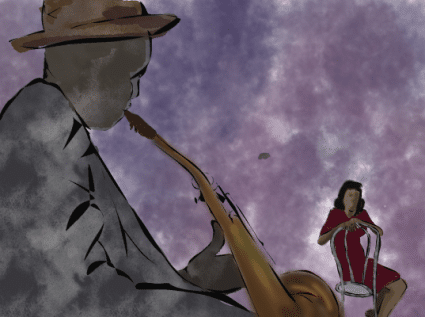
.
___
.
.
Jazz and American Poetry
by Tad Richards
.
…..The pecking order between jazz and American poetry completely reversed itself over the course of the 20th Century. Jazz began as the primitive handmaiden to the high art sublimity of poetry; ultimately, poetry was the supplicant art, jazz the altar. To the poet, at the beginning, the jazz musician was the anonymous Negro, the “Black buck,” an occasion for poetry more than its real subject. Ultimately, the musician would become the reverently addressed Bird, or Lady, or Mingus, or dear John, dear Coltrane.
…..It’s hard to say that the reverence was misplaced. Jazz and blues-based music are America’s art form, the cultural exports that have won worldwide respect. It is equally pointless to criticize the sensibility of an earlier era for being the sensibility of an earlier era. Still, the white culture of the Twenties, the “Jazz Age” youth chronicled by F. Scott Fitzgerald, knew little about jazz, and less about the Black culture that created it. New York contained some exceptions to this pattern, as white intellectuals like Carl Van Vechten sponsored Black artists from James Weldon Johnson to Bessie Smith, and New Yorkers George and Ira Gershwin created Porgy and Bess. But the American arts establishment, caught in the heady rush of modernism, failed to notice America’s foremost modernist without portfolio, who was (as they also failed to notice) arguably America’s greatest artist: Louis Armstrong. Armstrong was tearing down old constructs and creating a new artistic vocabulary to catch the temper of the times — and unlike many of the other modernists, he was doing it in the vernacular of the people.
…..But for the early white poets, jazz was background or metaphor. Mina Loy used jazz as a setting for urban dramas of love and sexuality — and, of course, race: “The white flesh quakes to the negro soul, Chicago! Chicago!” (from “The Widow’s Jazz”).
…..Other poets of the Twenties sought formal inspiration from the music. Vachel Lindsay and Hart Crane, in very different ways, set out to write poetry to the rhythms of jazz. They succeeded in being the first to prove what later poets, many of them more sophisticated in the study of jazz, would only prove over and over again: that one cannot write poetry to the rhythms of jazz. Nonetheless, the music left its mark on Lindsay’s rhythmic drive (though Lindsay would both accept and angrily reject his designation as as a “jazz poet”) and Crane’s jarring complexity.
…..Contemporary British critics like Clive Bell and Wyndham Lewis claimed to see the rhythms of jazz as the basis for T. S. Eliot’s “The Waste Land,” which suggests, more than anything else, the conflation of “jazz” and “American” in the minds of many in the 1920s. Eliot’s reference to “that Shakespeherian rag” may connect to his youth in Missouri, birthplace of ragtime, but he appears to be using it in the same way that Loy used black music — as a metaphor for primitive spontaneity. In “The Waste Land,” Eliot has a lovely woman putting a record on the gramophone — jazz? But Eliot doesn’t know what jazz is. His other American musical reference in the poem, to the moon shining bright on Mrs. Porter, is to a square dance tune, and perhaps his most famous song lyric quote, the bamboo tree of “Sweeney Agonistes,” comes from a minstrel show.
…..Among white poets of the twenties, only Carl Sandburg really wrote about the experience of listening to jazz. Sandburg was a folklorist and a lover of Americana, and his “Jazz Fantasia” shows an understanding of what jazz musicians actually do, and the range of emotions they can summon. So already in the Twenties, the principal ways in which poets were to use jazz had been established: jazz as metaphor, jazz as rhythmic base, and poetry as voice to the jazz musician
…..As jazz came from African-Americans, its most eloquent poet in the Twenties (perhaps ever) was Langston Hughes, who managed all three approaches, frequently in the same poem. “Weary Blues” is a classic example. The poet hears an old blues singer in a Harlem club. He is moved by the music; he reports on the lyric; finally, by a kind of osmosis, he enters into to the old blues singer. Yet even in a masterpiece of understanding like “Weary Blues,” the old jazzman is anonymous — “a Negro” heard in some not quite remembered joint on Lenox Avenue on some not quite remembered night.
…..Hughes used the blues form often in his poetry. One doesn’t actually have to go to a literary sophisticate like Hughes for great poetry in the blues form (Robert Johnson or Chuck Berry will fill that order quite well), but Hughes is a powerful bridge.
…..Jazz and poetry drifted apart in the Thirties and Forties. For the reasons why, consider Eileen Simpson’s anecdote in Poets in Their Youth about a time when Robert Lowell caught Delmore Schwartz listening to a Bessie Smith record, and castigated him for his Philistinism. Poetry belonged to the academy in those days, and jazz was a long way from acceptance by the academy. As late as 1965, the Pulitzer Prize committee, faced with the prospect of awarding a prize to Duke Ellington for Such Sweet Thunder, his tribute to Shakespeare, chose to give no prize at all in music that year.
…..But by the 1950s, jazz and poetry had reunited with a vengeance. This was the era of the culture wars between the academics and the Beats, and the Beats embraced jazz as their music.
…..Jazz as a rhythmic base and inspiration for poetry became a central tenet of the Beats’ theoretical connection to their music of choice — curiously, in one sense, because if the danceable rhythms of traditional jazz had proved to be too subtle for poets of an earlier generation, what was to be made of the complexities of Charlie Parker and the beboppers?
…..Jazz and jazz musicians were actually more important to the Beats as metaphor. As Norman Mailer explained in his 1957 essay “The White Negro,” Black Americans, and particularly Black jazz musicians, were seen by white hipsters as outlaws by the circumstance of racism, having no choice but to be subversive, and therefore a role model for the white rebel who chose to oppose the system. Allen Ginsberg, in Howl, referred to jazz as a subject for contemplation by “angelheaded hipsters” — a symbol of outlaw spirituality. But Ginsberg himself had no strong commitment to jazz. When he became the eminence grise of the hippie movement of the Sixties, he switched his allegiance to Bob Dylan and the protest folk-rockers. In an interview not long before his death, Ginsberg described the desire of the Beats to free themselves from the metronomic cadences of formal verse, and to find new cadences based on bebop. This is similar to Hart Crane’s assertion to his patron Otto Kahn that he wrote in the rhythms of jazz: metaphor and inspiration rather than musicology.
…..Other Beats had a closer connection to jazz. Jack Kerouac is often dismissed by jazz aficionados for describing George Shearing, who by then had become a commercial cocktail pianist, as “God,” but Kerouac actually had a history as a jazz aficionado.
…..But it didn’t do much for his poetry. Kerouac described his writing style as “spontaneous bop prosody,” but bop was no more spontaneous than it was unheeding of the metronome. Kerouac’s volume of poetry, Mexico City Blues, is more remembered for its having been written by the author of On the Road than for its poetic merit. One of the most jazz-knowledgeable of all the Beats was Ted Joans, himself a musician, who in a 1981 essay distinguished between the real jazz aficionados and the fellow travelers. It turns out that the most sophisticated jazz listeners are not necessarily the best poets; the best poets, even the most rhythmically challenging ones, are not necessarily the real jazz mavens. Interestingly, Joans includes the early Leroi Jones in the list of jazz neophytes, although Jones, later Amiri Baraka, came to be a considerable authority: his nonfiction book, Blues People, is considered one of the classics in its field, and he has written extensively about jazz. He was not one of the most prominent figures on the Beat jazz/poetry performance scene, although in later years he did a great deal of serious work combining poetry, drama and jazz, including collaborations with musicians like Max Roach.
…..Jazz and poetry became a joint performance item in the Beat era. This was not a new idea. Both Langston Hughes and Kenneth Rexroth had performed poetry to jazz in earlier times, but it became a phenomenon in the Fifties. Kenneth Patchen, a Beat precursor, was one of the first to record his poetry with a jazz group, and perhaps the most dedicated to the hybrid art. Reading poetry to jazz quickly became a staple of the San Francisco club scene. Rexroth, Philip Lamantia, Lawrence Ferlinghetti and others participated in the movement. In his introduction to A Coney Island of the Mind, Ferlinghetti states that the poems are written for oral presentation to jazz accompaniment, not for the printed page.
…..Composer/performer David Amram recalls participating in New York’s first poetry-and-jazz performance, in 1957 with Kerouac, Lamantia and Howard Hart. Amram, more an orchestral and chamber composer than a jazzman, also provided the improvised score for Robert Frank’s film Pull My Daisy.
…..The notoriety of the Beats helped to turn poetry and jazz into something of a fad, and more ambitious performances were put together. Patchen performed with Charles Mingus, Ferlinghetti with Stan Getz. Probably the best-selling commercial collaboration was between Kerouac and Steve Allen. During this same time period, perfomers who came from the jazz/entertainment world rather than the literary world were doing similar work. Lord Buckley and Ken Nordine incorporated doggerel, performance poetry and word improvisations against a jazz background. Buckley died in 1960; Nordine continued to perform “Word Jazz” into the 21st century.
…..Poetry and jazz was a fad, and it died out when the media lost its fascination with the Beats. Patchen, the poet most seriously committed to the form, might have carried it on longer, but for crippling ill health.
…..The most artistically successful marriage of poetry to the rhythms of jazz was created by The Last Poets, a collective that arose during the Black Power phase of the 1960s Civil Rights Era. While a number of people were associated with this group, Jalal Nuriddin, Abiodun Oyewole and Umar Bin Hassan, who wrote and performed the material on the group’s first album, are considered the key members. The Last Poets are often described as the first rappers, but their best work, like Hassan’s “Niggers Are Scared of Revolution,” will stand comparison with the canon of 20th Century poetry.
…..In the 1960s, Frank O’Hara’s poem “The Day Lady Died” was more about O’Hara than it was about Billie Holiday, but it did use an individual jazz icon as metaphor: in this case, her death as metaphor for an irreparable rent in the cultural fabric of New York. O’Hara died in the same year that Ellington was passed over for the Pulitzer.
…..Perhaps most powerful during this era were the jazz poems of Robert Hayden, which formed a part of his epic mosaic of Black history and culture in America. When Hayden wrote about an artist like Bessie Smith, he was not writing about how she made him feel or using her as metaphor, he was painting a portrait of Bessie herself, with her artistry and regal state presence.
…..In 1970, Michael S. Harper, with Dear John, Dear Coltrane, became the first poet to give jazz, and jazz musicians, a real centrality in his work. Harper wrote poems about, or addressed to, Coltrane, Billie Holiday, Miles Davis, Elvin Jones, Bud Powell, Paul Chambers — these were the jazz poems of a poet whose subject was jazz itself. One could write about Billie Holiday as metaphor and expect an audience of general cultural literacy to understand, just as one could expect a general audience to follow the reference to a “Negro” in a bar on Lenox Avenue. Harper demanded that his audience know jazz.
…..Hayden, like Hughes before him, and Baraka in a different way, had used poetry to celebrate jazz as an expression of Black consciousness. Harper had traveled the complete distance from Loy and Lindsay, and used poetry to celebrate the artistry of jazz and its performers.
…..By the end of the 20th Century, jazz was significant enough as a subject for poetry that a successful and respected small magazine, Brilliant Corners, edited by Sascha Feinstein, was devoted entirely to jazz literature. Yusef Komunyakaa and Feinstein edited two anthologies of jazz poetry. Jazz has been a favorite subject in the poetry of Komunyakaa and William Matthews, and poets such as Quincy Troupe, Billy Collins, Wanda Coleman, Hayden Carruth, Dana Gioia, Etheridge Knight and Philip Levine have paid tribute in their work to jazz music and jazz artists.
…..The relationship of jazz to modernism is an interesting one. The development of jazz was so rapid and so revolutionary that many critics think of Charlie Parker’s music as a repudiation of Louis Armstrong’s — the earlier music is called “traditional” jazz, the later “modern.” But Armstrong and Parker were not so far different aesthetically — both were moderns. The mainstream (and basically white) artistic/cultural community, including the poetry community, tended for a long time to see jazz as something other than the major art form that it is. Jazz to the mainstream modernists of the 20s and 30s symbolized the unsentimental truth and honesty that they espoused, but they also sentimentalized it, actually in much the same way that Kerouac would later — jazz as spontaneous and primitive.
…..The jazz poets of the 1980s and 90s had a much greater understanding of the totality and the artistry of jazz. They had no problem understanding what was wrong with a critic like Bell — or even Eliot himself — calling Eliot’s minstrel-show reference “jazz.”
…..But perhaps a postmodernist assessment might take a more tolerant view of Eliot’s paternalistic, racist, but not unobservant take on the minstrel show rhythms of his St. Louis boyhood. The “Zip Coon” aspect of Black vaudeville reflects a painful chapter in the history of American racism, but the artists who created it, from Bert Williams and Bill “Bojangles” Robinson to unknown dancers and banjo players, were artists who played an important role in developing the rhythms of American life, speech, and poetry.
.
.
___
.
.
Selected Sources: Hughes, Langston, The Poetry of Langston Hughes (Caedmon, 1969); Patchen, Kenneth, Kenneth Patchen Reads with Jazz in Canada (Folkways, 1960); Kerouac, Jack, The Jack Kerouac Collection (Rhino, 1995); Baraka, Amiri, New Music New Poetry (India Navigation, 1992); The Last Poets, The Last Poets (Douglas, 1970).
.
Further Reading: Loy, Mina, Lunar Baedeker & Time Tables (Highlands, NC: Jonathan Williams, 1958); Sandburg, Carl, Smoke and Steel (NY: Harcourt Brace,1920); Lindsay, Vachel, The Congo and Other Poems (NY: MacMillan, 1914); Crane, Hart, The Bridge (NY: Liveright, 1930); Hughes, Langston, The Weary Blues (NY: Alfred A. Knopf, 1926); Baraka, Amiri, Selected Poetry of Amiri Baraka/LeRoi Jones (NY: William Morrow, 1978); Hayden, Robert, Selected Poems (NY: October House, 1966); Harper, Michael S., Dear John, Dear Coltrane (Pittsburgh: University of Pittsburgh Press, 1970); Komunyakaa, Yusef, Pleasure Dome (Middletown, CT: Wesleyan University Press, 2001); Feinstein, Sascha and Yusef Komunyakaa eds., The Jazz Poetry Anthology (Bloomington, IN, Indiana University Press, 1991); Lange, Art and Nathan Mackey, Moment’s Notice: Jazz in Poetry and Prose (Minneapolis: Coffee House Press, 1993).
.
.
This essay originally appeared in the Greenwood Encyclopedia of American Poetry (2005). It is published with the permission of the author.
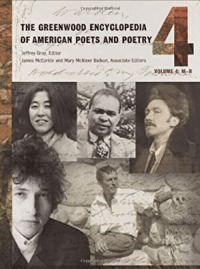
.
.
___
,.
.
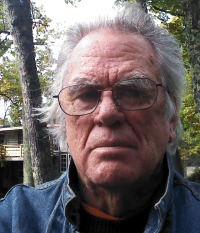
James (Tad) Richards (born March 31, 1940) is an American writer and visual artist. He is also artistic director and former president of Opus 40, the sculpture park in Saugerties, New York.
Richards was born in Washington, D.C. in 1940. In 1943, his mother married the sculptor Harvey Fite, who created Opus 40 from 1939 to 1976.[1] He attended Bard College (where Fite was on the faculty) before earning a Master of Fine Arts from the Iowa Writers’ Workshop. At Iowa, he studied with Paul Engle, Donald Justice and Philip Roth. He has taught literature, composition and creative writing at several institutions, including Winona State University, the State University of New York at New Paltz and Marist College. He has authored 16 books of non-fiction, and has written extensively on music and poetry. His new book is Jazz with a Beat: Small Group Swing, 1940-1960 (Excelsior)
Click here to visit his Wikipedia page, and click here to visit his website
.
.
___
.
.
Click here to read previous editions of The Sunday Poem
Click here to read “A Collection of Jazz Poetry – Winter, 2024 Edition”
Click here for information about how to submit your poetry or short fiction
Click here to subscribe to the (free) Jerry Jazz Musician quarterly newsletter
Click here to help support the ongoing publication of Jerry Jazz Musician, and to keep it commercial-free (thank you!)
.
___
.
.
Jerry Jazz Musician…human produced (and AI-free) since 1999
.
.
.









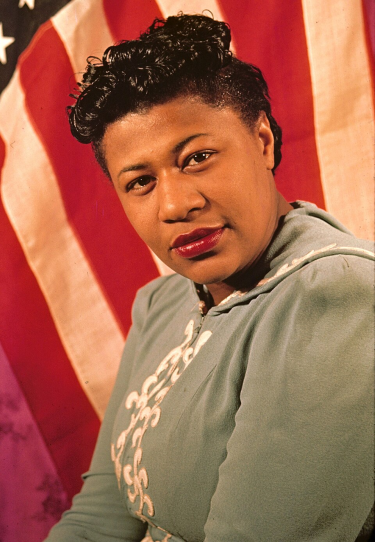














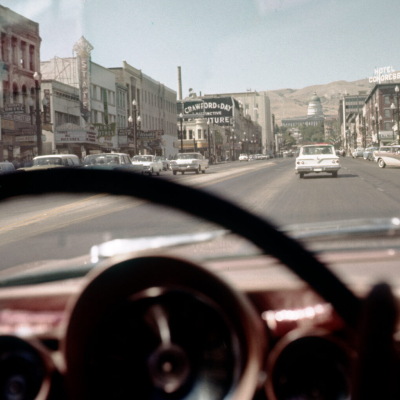















Tad is a fellow Hudson Valley resident and acquaintance through Facebook and several jazz and art venues over the decades. His essay is extremely well written researched and written and gives me the opportunity to learn about some poems/poets I had not been aware of.